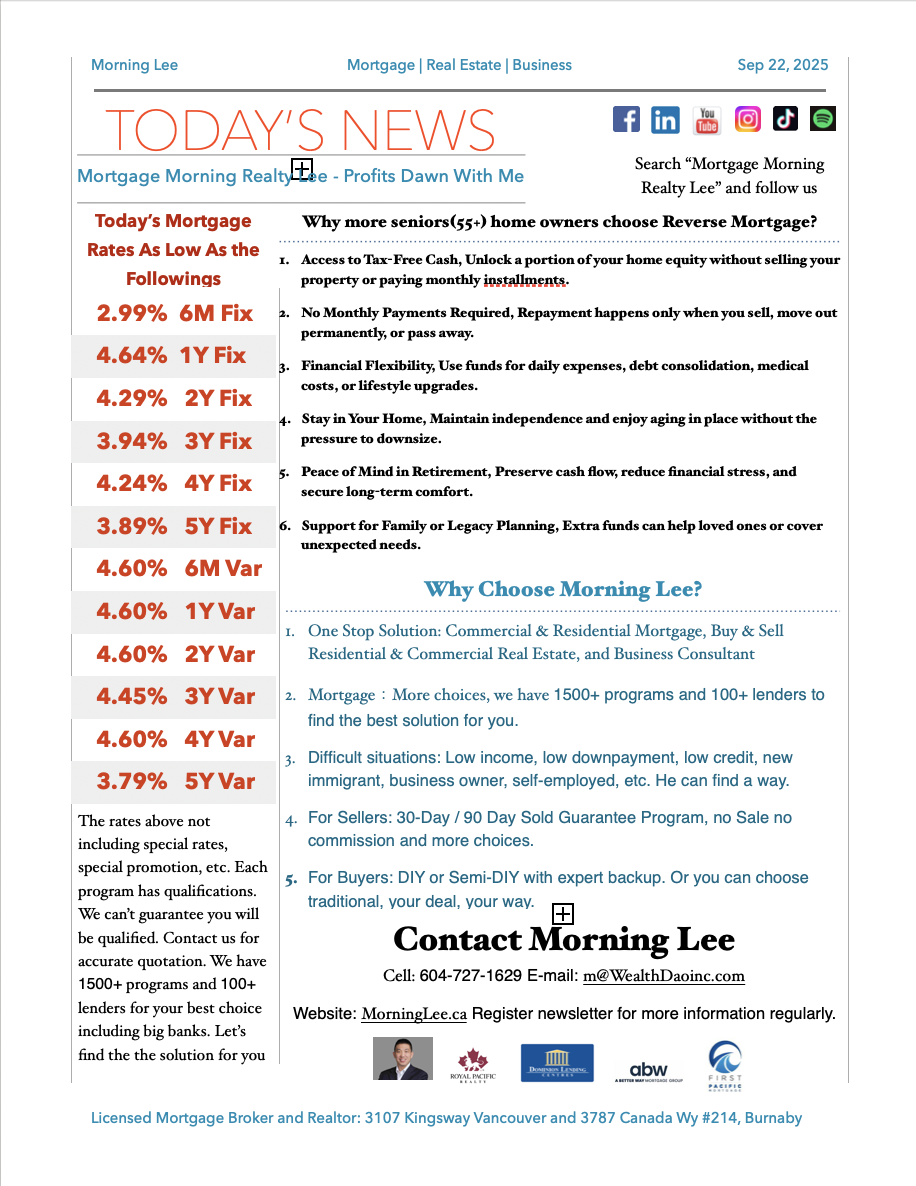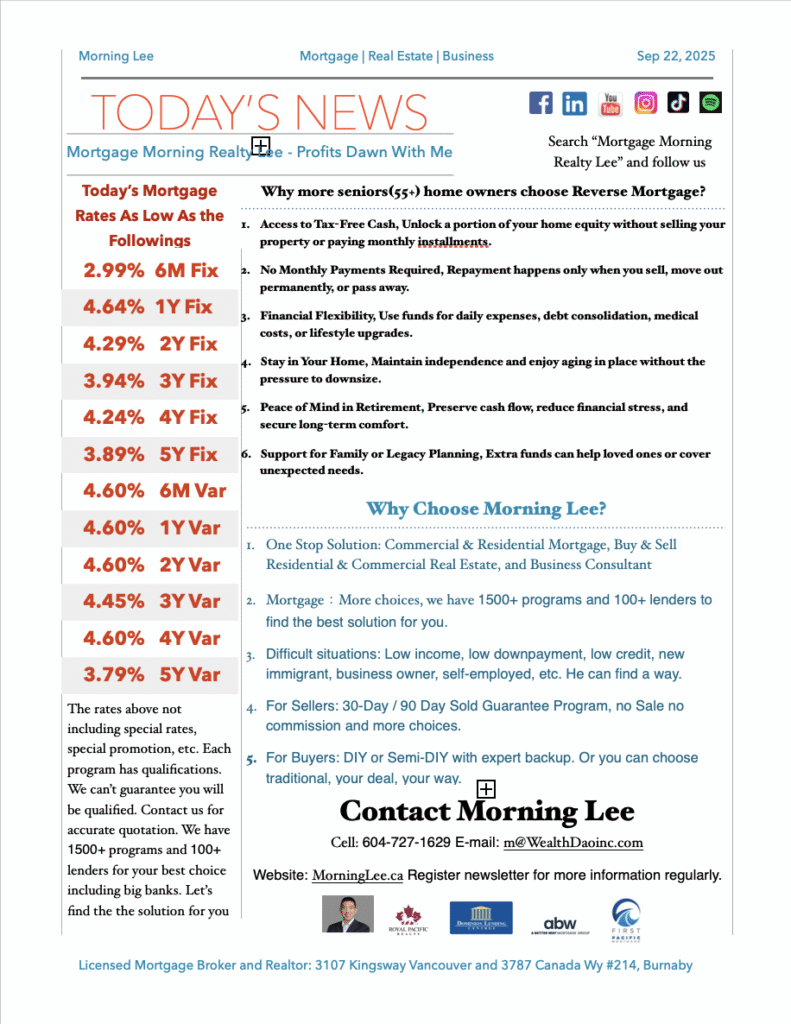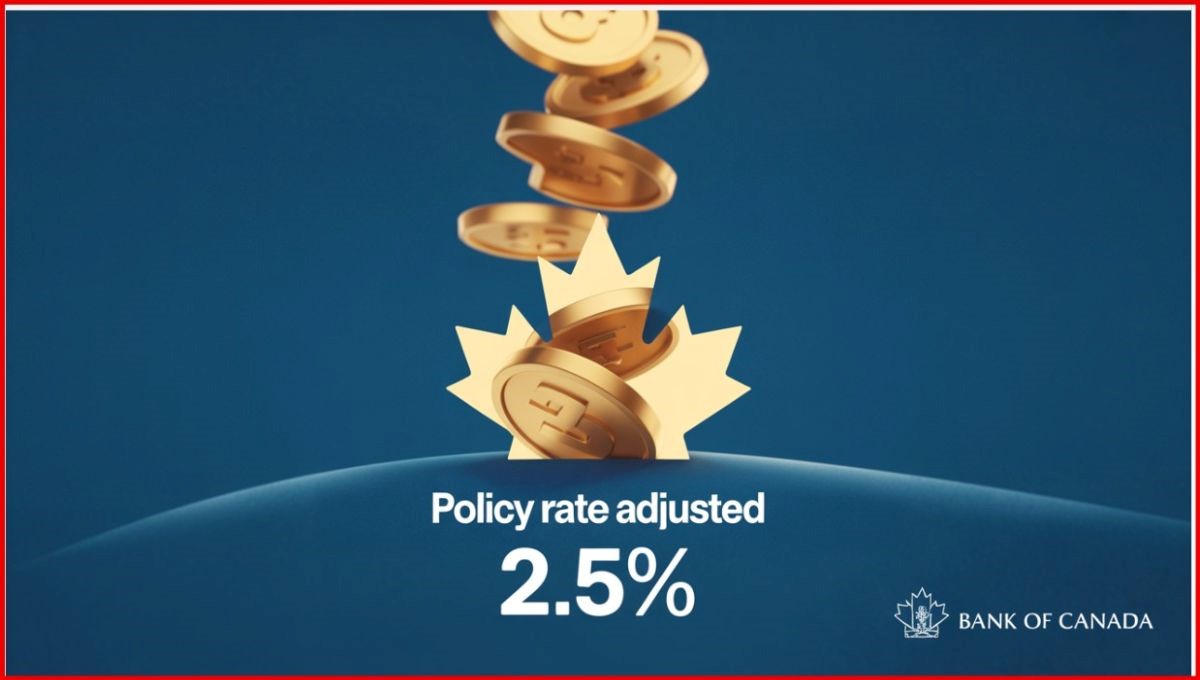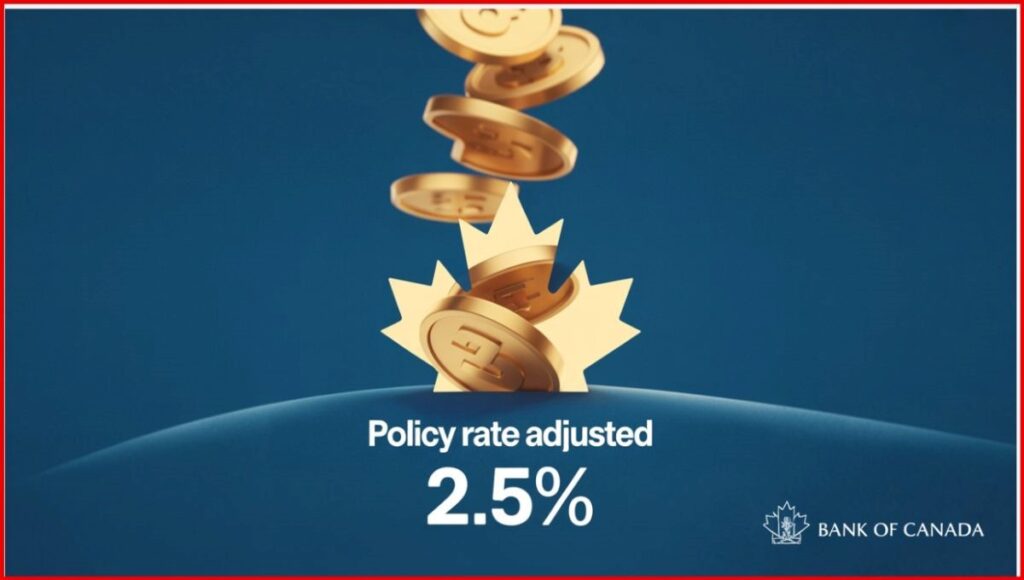Commercial Mortgage Broker Vancouver | Expert Financing for Warehouses, Offices, Retail, Hotel & Multi-Family | Morning Lee
Leading commercial mortgage broker securing loans for warehouses, offices, retail, plaza, stripe mall, hotels & multi-family properties. Get tailored financing solutions with competitive rates.
Vancouver’s Premier Commercial Mortgage Broker
*Funded for Industrial, Retail & Hospitality Properties*
Why 87% of Vancouver Investors Choose a Specialized Commercial Mortgage Broker
Navigating commercial financing requires expertise in:
- Asset-Specific Underwriting: Warehouse clearance heights vs hotel occupancy metrics
- Market Cycle Timing: Capitalizing on cap rate fluctuations
- Complex Deal Structuring: CMHC-insured multi-family vs conventional industrial loans
- Zoning-Driven Valuations: Industrial vs mixed-use premiums
Commercial Property Financing Solutions
Tailored Mortgage Structuring by Asset Class
Warehouses & Industrial Facilities
Financing for last-mile logistics, manufacturing & distribution
- Clearance height premium financing
- Power supply infrastructure loans
- Cross-dock facility specialized programs
Office Buildings
Downtown core towers to suburban flex spaces
- Tenant improvement allowance financing
- Green building certification incentives
- Vacancy rate bridge solutions
Retail Stores & Shopping Centers
Anchor tenant-dependent financing strategies
- Pad site construction loans
- Renovation financing during tenant turnover
- Sales volume-based underwriting
Multi-Family Buildings
*5+ unit apartment building expertise*
- CMHC-insured refinancing
- Value-add repositioning loans
- Rent roll analysis optimization
Hotels & Hospitality
Occupancy-driven financing solutions
- RevPAR-based underwriting
- Renovation PIP financing
- Seasonal cash flow accommodations
Plaza and Strip Malls
Financing anchored retail centers and neighborhood plazas
- Anchor tenant credit analysis (national vs local)
- Pad site acquisition and development loans
- Renovation financing for tenant retention
- Vacancy rate bridge solutions during repositioning
- Sales volume-based loan covenants
- Outparcel financing opportunities
- CAM cost recovery underwriting
Special Purpose Properties
Unique asset financing
- Automotive service centers
- Self-storage facilities
- Gas stations/C-stores
The Commercial Mortgage Broker Advantage
Why Developers & Investors Partner With Us
Access to 1100+ products / Lender Channels
- Big 6 Banks
- Credit Unions
- Private Funds
- CMHC Providers
Deal Engineering Expertise
Rate Negotiation Mastery
- Average 0.92% lower rates than direct bank offers
- 30-120 day rate hold guarantees
- Pre-approval leverage for off-market acquisitions
Our Commercial Mortgage Process
Four-Phase Approval Framework
- Asset Strategy Session
- Property type-specific underwriting assessment
- Cash flow optimization analysis
- Lender Matchmaking
- institution pre-screening
- Loan scenario modeling (term, amortization, covenants)
- Submission Crafting
- Bank-grade proposal packaging
- NOI enhancement documentation
- Closing Coordination
- Legal/tax specialist integration
- Draw administration for construction loans
Why Vancouver’s Top Developers Trust Our Commercial Mortgage Broker Team
Quantifiable Expertise
- 30+ years team financing Vancouver commercial real estate
- High approval rate on complex deals
- Portfolio financing for many business owners and investors
Client Protection Framework
- No upfront broker fees
- Full lender fee transparency
- Ongoing rate monitoring
- Refinancing advantage alerts
Start Your Commercial Financing Journey
Step 1: Property Assessment
Step 2: Lender Matching
Book Asset Strategy Call
Step 3: Loan Structuring
“While banks see property types, we see potential. Let us unlock your asset’s financing power.”
— Commercial Mortgage Broker Morning Lee
Resources:
-

Canadian Home Sales Post Best September In Four Years

Today’s release of the September housing data by the Canadian Real Estate Association (CREA) showed a pullback on the housing front. The number of home sales recorded through Canadian MLS® Systems declined by 1.7% on a month-over-month basis in September 2025. Nevertheless, it was the best month of September for sales since 2021.
The slight monthly decline was the result of lower sales activity in Greater Vancouver, Calgary, Edmonton, Ottawa, and Montreal, which more than offset gains in the Greater Toronto Area and Winnipeg.
“While the trend of rising sales that began earlier this year took a breather in September, activity was still running at the highest level for that month since 2021, and that was true in July and August as well, said Shaun Cathcart, CREA’s Senior Economist. “With three years of pent-up demand still out there and more normal interest rates finally here, the forecast continues to be for further upward momentum in home sales over the final quarter of the year and into 2026.”

New Listings
New supply dropped 0.8% month-over-month in September. Combined with a slightly larger decline in sales activity, the sales-to-new listings ratio eased slightly to 50.7% compared to 51.2% in August. The long-term average for the national sales-to-new listings ratio is 54.9%, with readings roughly between 45% and 65% generally consistent with balanced housing market conditions.
There were 199,772 properties listed for sale on all Canadian MLS® Systems at the end of September 2025, up 7.5% from a year earlier but very close to the long-term average for that time of the year.
“While there are more buyers in the market now than at almost any other point in the last four years, sales activity is still below average and well below where the long-term trend suggests it should be,” said Valérie Paquin, CREA Chair. “As such, we expect things to continue to pick up steadily in the future.
There were 4.4 months of inventory on a national basis at the end of September 2025, unchanged from July and August and the lowest level since January. The long-term average for this measure of market balance is five months of inventory. Based on one standard deviation above and below that long-term average, a seller’s market would be below 3.6 months, and a buyer’s market would be above 6.4 months.


Home Prices
The National Composite MLS® Home Price Index (HPI) was again almost unchanged (-0.1%) between August and September 2025. Following declines in the first quarter of the year, the national benchmark price has remained mostly stable since April.
The non-seasonally adjusted National Composite MLS® HPI was down 3.4% compared to September 2024. Based on the extent to which prices fell off beginning in the fall of 2024, look for year-over-year declines to shrink in the fourth quarter of the year.

Bottom Line
Homebuyers are responding to improving fundamentals in the Canadian housing market. Supply has risen as new listings surged until May of this year. Additionally, the national benchmark average price is 3.5% lower than it was a year earlier. That decrease was smaller than in August.The view is nearly unanimous that the Federal Reserve will cut the overnight policy rate again by 25 basis points when it meets again on October 29.
The jury is out on the Bank of Canada’s next move. Their decision date is also October 29. While the stronger-than-expected labour market report might have dissuaded the Bank from easing, all eyes will be on the next CPI report on October 21.
With the Bank of Canada cutting the policy rate halfway through September and another 25-basis-point reduction expected by January, if not sooner, the CREA forecasts sales to rise by 7.7% in 2026.
“Interest rates were always going to be the thing that brought this thing back to life,” Cathcart said in an interview. “While that long-anticipated recovery has been delayed and dampened by trade uncertainty, the Bank of Canada is getting close to dipping out of the neutral range and into stimulative territory.


Dr. Sherry Cooper
-

Mortgage Rates Drop into the 3% Range, Reverse Mortgages Gain Popularity Among Homeowners 55+
The latest Canadian mortgage rate data shows that mainstream lending products continue to trend lower, with many fixed and variable rates now entering the “3% range.” For example, the six-month fixed rate is as low as 2.99%, the three-year fixed rate stands at 3.94%, and the five-year variable rate has dropped to 3.79%. This creates a wide range of low-cost borrowing options for homeowners.
Against this shifting interest rate backdrop, reverse mortgages are seeing growing interest among homeowners aged 55 and older. This financial solution allows homeowners to convert their home equity into tax-free cash—without selling their property or being required to make monthly payments—while still retaining the right to live in their home.

-

Unlock Your Home’s Equity: Smart Strategies for 55+ Homeowners
As housing markets fluctuate, many homeowners over 55 find themselves in an interesting dilemma: they see opportunities in the current market but are reluctant to sell their primary residence in uncertain conditions. This is where innovative financial solutions can provide the flexibility and security needed to navigate these decisions.
The Downsize/Rightsize Strategy
For those looking to transition to a more suitable living arrangement without sacrificing financial stability, there’s a way to achieve the best of both worlds. Rather than selling your home immediately in a market you’re unsure about, you can access your home’s equity to purchase a new property while holding onto your existing home. This approach allows you to:
- Purchase a new property with the proceeds from a specialized financial product
- Sell your current home when the market conditions are more favorable
- Move into your new property at your own pace without pressure
This strategy is particularly valuable with financial products that feature low prepayment penalties, making it a viable option for many homeowners.
Vacation Homes and Investment Properties
The growing interest in second homes and vacation properties represents both a lifestyle choice and an investment strategy. By releasing equity from your principal residence, you can purchase additional properties either free and clear or in combination with traditional financing. The unique advantage of certain financial tools is that they don’t require mandatory principal and interest payments, which can significantly lower your overall Total Debt Service (TDS) ratio. This improved financial position has enabled many borrowers to purchase additional properties that were previously beyond their reach.
Creating Living Inheriences
Many homeowners want to help their children enter the real estate market but aren’t aware of options available to them. When liquid assets are limited and traditional financing isn’t an option, there are solutions that allow you to provide a living inheritance through your home’s equity. The proceeds from such strategies are typically tax-free and offer payment flexibility. In many scenarios, borrowing against your home equity represents a more cost-efficient solution than creating large tax burdens by gifting from taxable investments.
Understanding Reverse Mortgages
For Canadians 55 and older, reverse mortgages have become an increasingly popular way to access home equity without selling. These financial arrangements allow homeowners to convert up to 55% of their home’s value into tax-free cash while retaining ownership. The funds can be received as a lump sum or regular payments, and repayment typically occurs only when the homeowner sells, moves out, or passes away.
This approach to accessing home equity doesn’t affect government retirement benefits like OAS or GIS, and provides financial flexibility that can enhance retirement living. However, it’s important to consider that interest rates on these products are typically higher than traditional mortgages, and they do reduce the equity available to heirs.
Is This Approach Right For You?
While accessing home equity can provide financial flexibility, it’s important to consider:
- Your long-term housing goals and lifestyle needs
- The impact on your overall financial picture and estate plans
- Current market conditions and timing considerations
- Alternative options that might better suit your specific situation
For those interested in learning more about how home equity solutions might work for their specific situation, MorningLee.ca offers additional insights in their article “Reverse mortgages: 55+? A cushion against the rising cost of living.”

-

Bank of Canada Lowers Policy Rate to 2.5%

Today, the Bank of Canada lowered the overnight policy rate by 25 bps to 2.5% as was widely expected. Following yesterday’s better-than-expected inflation report, the Bank believes that underlying inflation was 2.5% year-over-year.
Through the recent period of tariff turmoil, the Governing Council has closely monitored the risks and uncertainties facing the Canadian economy. Three developments triggered the Bank’s rate cut. Canada’s labour market softened further. Upward pressure on underlying inflation has diminished, and there is less upside to risk to future inflation with the removal of most retaliatory tariffs by Canada.
Considerable uncertainty remains. However, with a weaker economy and less upside risk to inflation, the Governing Council deemed that a reduction in the policy rate was appropriate to better balance the risks going forward.
“The Bank will continue to assess the risks, look over a shorter horizon than usual, and be ready to respond to new information.”

Today’s press release suggests that the global economy has slowed in response to trade disputes. In the US, business investment has been substantial, primarily driven by expenditures on Artificial Intelligence. However, consumers are cautious, and employment gains have slowed. It is nearly a certainty that the Federal Reserve will lower its overnight policy rate this afternoon.
“Growth in the euro area has moderated as US tariffs affect trade. China’s economy held up in the first half of the year, but growth appears to be softening as investment weakens. Global oil prices are close to their levels assumed in the July Monetary Policy Report (MPR). Financial conditions have continued to ease, with higher equity prices and lower bond yields. Canada’s exchange rate has been stable relative to the US dollar.”
Canada’s economy contracted in the second quarter, posting a growth rate of -1.6%. Exports fell by 27% in Q2 following a surge in exports in advance of tariffs in Q1. Business investment also fell in Q2. “In the months ahead, slow population growth and the weakness in the labour market will likely weigh on household spending.”
Employment has declined in the past two months. “Job losses have largely been concentrated in trade-sensitive sectors, while employment growth in the rest of the economy has slowed, reflecting weak hiring intentions. The unemployment rate has moved up since March, hitting 7.1% in August, and wage growth has continued to ease.”
Bottom Line
The Bank of Canada was pretty tight-lipped about future rate cuts, but given the current trajectory, we expect another rate cut when they meet again this fall. The next BoC decision date is October 29, and the central bank wraps up the year on December 10. We expect at least one more rate cut this year, ending the year with a policy rate of 2.0%-2.25%. This should help boost interest-sensitive spending, most particularly housing, where there is considerable pent-up demand.
The Bank will move cautiously, but with the Fed cutting rates again later this year, this gives the BoC cover. While some have questioned the Bank’s easing in the face of 3% core inflation, other inflation measures suggest that underlying inflation is roughly 2.5%. The economic and labour market slowdown bodes well for another rate cut.
Traders in overnight swaps continue to price in another cut from the central bank this cycle, and put the odds at about a coin flip that they’ll ease again in October.The central bank’s communications suggest that while it has resumed monetary easing to support the ailing economy, it is leery of cutting interest rates too quickly, given the potential inflation risks posed by the surge in global protectionism and tariffs.

Dr. Sherry Cooper
-

Can a 50-Year Amortization Really Fix Housing Affordability?
The housing conversation in Vancouver and Toronto has taken a fresh turn. With prices stubbornly high, the latest debate is whether extending mortgage amortizations to 50 years could make ownership more attainable. On paper, stretching payments over a longer period reduces monthly obligations, giving first-time buyers a chance to step in. But does it truly solve the affordability crisis?
Supporters highlight that aligning monthly payments with incomes offers short-term relief. A couple eyeing an $800,000 home might see their monthly payment drop by thousands if stretched over 50 years rather than 25. That breathing room could be the difference between renting indefinitely and finally buying.
Critics, however, caution against the hidden costs. A half-century loan means paying interest that could double or even triple the original principal. And the deeper issue remains untouched: limited supply and unrelenting demand keep prices high. Extending the clock doesn’t change that fundamental imbalance.
For buyers and homeowners, the question becomes less about policy experiments and more about practical solutions available today. Consider strategies like rate holds that secure current interest levels for up to 120 days, or insured mortgage products that lower down payment requirements for qualified buyers. Homeowners with existing equity can explore refinancing, creating flexibility without waiting for Ottawa to make the next move. Families are also increasingly turning to innovative tools like reverse mortgages, which allow those 55+ to unlock home equity. For example, this piece on Reverse mortgages: 55+? A cushion against the rising cost of living explains how senior homeowners are using property wealth to offset rising expenses or even support their children’s first purchase.
These are not abstract policy debates—they are actionable options that real families are already using to navigate today’s market. The conversation about 50-year amortizations reflects a shared anxiety about affordability, but the solutions may be closer than most people think.
If you’re wondering what mix of strategies might work for your situation, MorningLee.ca is a place to start exploring.
